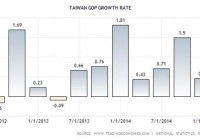What Is Liquidity? (Part VIII)
Here are some simple propositions on liquidity: Liquidity is positively influenced by the quality of an asset. Liquidity is positively influenced by the simplicity of an asset. Liquidity is negatively influenced by the price momentum of an asset. Liquidity is negatively influenced by the level of fear (or overall market price volatility). Liquidity is negatively influenced by the length of an asset’s cash flow stream. Liquidity is negatively influenced by concentration of the holders of an asset. Liquidity is negatively influenced by the length of the time horizon of the holders of an asset. Liquidity is positively influenced by the amount of information available about an asset, but negatively affected by changes in the information about an asset. Liquidity is negatively influenced by the level of indebtedness of owners and potential buyers of an asset Liquidity is negatively influenced by similarity of trading strategies of owners and potential buyers of an asset. Presently, we have a lot of commentary about how the bond market is supposedly illiquid. One particular example is the so-called flash crash in the Treasury market that took place on October 15th, 2014 . Question: does a moment of illiquidity imply that the US Treasury market is somehow illiquid? My answer is no. Treasuries are high quality assets that are simple. So why did the market become illiquid for a few minutes? One reason is that the base of holders and buyers is more concentrated. Part of this is the Fed holding large amounts of virtually every issue of US Treasury debt from their QE strategy. Another part is increasing concentration on the buyside. Concentration among banks, asset managers, and insurance companies has risen over the last decade. Exchange-traded products have further added to concentration. Other factors include that 10-year Treasuries are long assets. The option of holding to maturity means you will have to wait longer than most can wait, and most institutional investors don’t even have an average 10-year holding period. Also, presumably, at least for a short period of time, investors had similar strategies for trading 10-year Treasuries. So, when the market had a large influx of buyers, aided by computer algorithms, the prices of the bonds rose rapidly. When prices do move rapidly, those that make their money off of brokering trades take some quick losses, and back away. They may still technically be willing to buy or sell, but the transaction sizes drop and the bid/ask spread widens. This is true regardless of the market that is panicking. It takes a while for market players to catch up with a fast market. Who wants to catch a falling (or rising) knife? Given the interconnectedness of many fixed income markets who could be certain who was driving the move, and when the buyers would be sated? For the crisis to end, real money sellers had to show up and sell 10-year Treasuries, and sit on cash. Stuff the buyers full until they can’t bear to buy any more. The real money sellers had to have a longer time horizon, and say, “We know that over the next 10 years, we will be easily able to beat a sub-2% return, and we can live with the mark-to-market risk.” So, though they sold, they were likely expressing a long-term view that interest rates have some logical minimum level. Once the market started moving the other way, it moved back quickly. If anything, traders learning there was no significant new information were willing to sell all the way to levels near the market opening levels. Post-crisis, things returned to “normal.” I wouldn’t make all that much out of this incident. Complex markets can occasionally burp. That is another aspect of a normal market, because it teaches investors not to be complacent. Don’t leave the computer untended. Don’t use market orders, particularly on large trades. Be sure you will be happy getting executed on your limit order, even if the market blows far past that. Graspy regulators and politicians see incidents like this as an opportunity for more regulations. That’s not needed. It wasn’t needed in October 1987, nor in May 2009. It is not needed now. Losses from errors are a great teacher. I’ve suffered my own losses on misplaced market orders and learned from them. Instability in markets is a good thing, even if a lot of price movement is just due to “noise traders.” As for the Treasury market – the yield on the securities will always serve as an aid to mean reversion, and if there is no fundamental change, it will happen quickly. There was no liquidity problem on October 15th. There was a problem of a few players mistrading a fast market with no significant news. By its nature, for a brief amount of time, that will look illiquid. But it is proper for those conditions, and gave way to a normal market, with normal liquidity rapidly. That’s market resilience in the face of some foolish market players. That the foolish players took losses was a good thing. Fundamentals always take over, and businesslike investors profit then. What could be better? One final aside: other articles in this irregular series can be found here .
